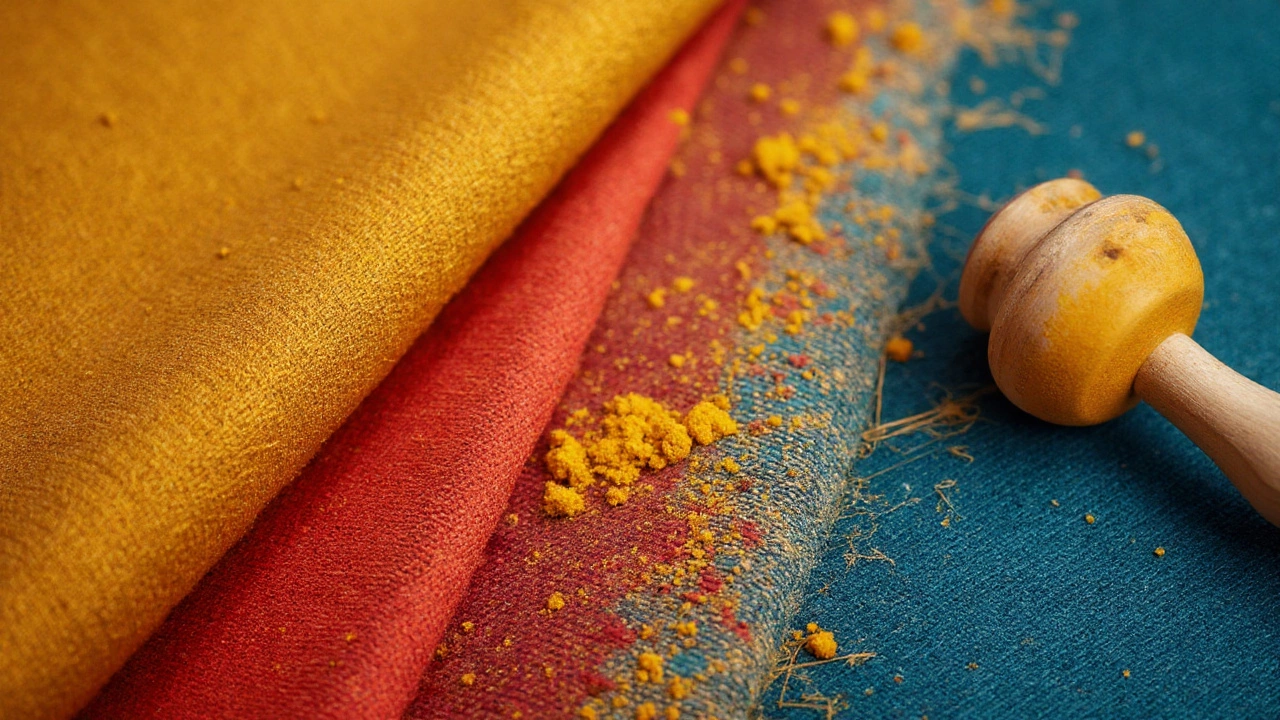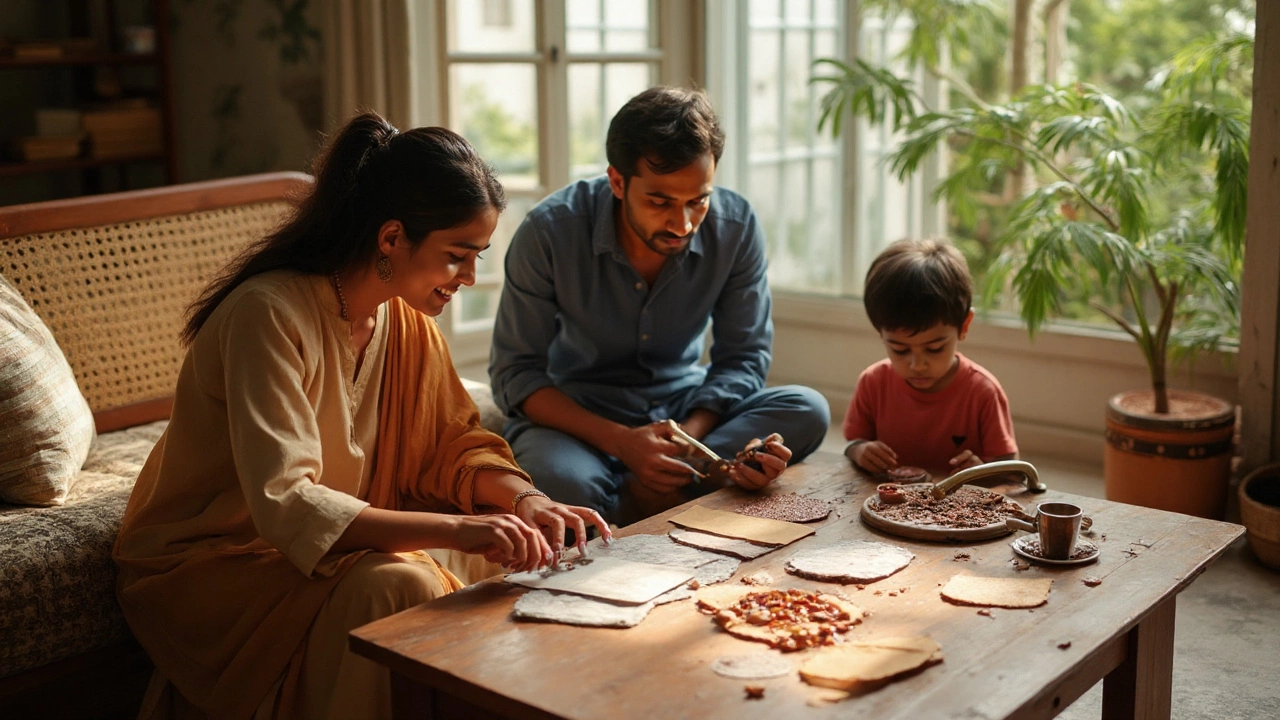Upholstery fabric grade is a retail price tier for sofa fabrics, not a universal quality score. Brands use A-H (or similar) to group fabrics by cost of production, pattern complexity, and fibre content; durability can vary inside the same grade.
Here’s the twist people miss: the “grade” on the label rarely tells you how long the fabric will last in your living room. The real indicators are lab metrics (like abrasion tests), fibre blends, weave, and finishes. If you’ve ever wondered which “grade” is best, you’re actually asking, “Which fabric will survive my life?” That answer depends on kids, pets, sun, how you clean, and the sofa’s job-movie marathons or polite tea.
TL;DR
- Grade = price tier, not durability. Ask for the spec sheet.
- Look for Martindale ≥ 30,000 cycles (busy homes); ≥ 50,000 for pets/rentals; ≥ 100,000 for contract-level toughness.
- Performance fabrics with stain shields (e.g., Crypton-style) simplify cleanup; check cleaning codes (W/S/WS).
- Fibre blends win: polyester/linen or wool/nylon blends balance feel, strength, and care.
- Match fabric to use: kids + pets → tight-weave poly or microfiber; formal rooms → linen or cotton-linen with lower rub count is fine.
What “fabric grade” really means on sofas
Fabric grade sounds official, but it’s mostly about cost to the manufacturer. An ornate jacquard with silk might sit in a higher grade than a plain polyester, even if the polyester outlives it by years. So don’t let grade steer you; let evidence do it.
Upholstery fabric is a textile designed for furniture covering, chosen for abrasion resistance, cleanability, colourfastness, and compliance with fire regulations.
If a salesperson says “Grade D is better than Grade B,” smile and ask for the fabric’s technical spec sheet. You want rub counts, pilling, lightfastness, and cleaning code. That’s the real story, not the alphabet.
The metrics that actually predict longevity
Here are the durability signals you can trust. These are standardised tests and properties used by designers and contract specifiers.
- Martindale abrasion test measures how many rub cycles a fabric withstands before wear; 20,000-30,000 is domestic heavy duty; 50,000+ suits very high use; 100,000+ is contract level.
- Wyzenbeek test is a U.S. abrasion method using double rubs; residential often starts around 15,000-30,000 double rubs; 50,000+ is robust for high-traffic areas.
- Pilling: look for a 4-5 rating (out of 5). Lower means bobbles form faster.
- Lightfastness: ratings 4-5 (out of 5, Blue Wool scale) resist fading in sunny rooms.
- Seam slippage: lower mm of slippage at a set load is better; well-constructed woven fabrics hold seams under stress.
- GSM (fabric weight): heavier isn’t always stronger, but 300-500 g/m² is common for durable domestic wovens; backing and weave matter more.
- Weave: tight plain weaves and twills resist snags; chenille and loose weaves feel lush but can catch.
- Cleanability: check the cleaning code (W, S, WS, X). Water-based clean is easiest for family life.
In the UK, fire safety matters. Many upholstery fabrics have a fire-retardant back-coat or require an FR interliner to meet regulations for domestic seating.
BS 5852 is a British Standard for assessing the ignitability of upholstered seating using match and cigarette tests; UK domestic sofas must pass applicable fire performance requirements.
Fibre families: how they behave in real homes
Every fibre brings strengths and quirks. Blends are popular because they balance comfort, durability, and care.
Linen is a flax fibre with crisp hand, breathability, and elegant drape; prone to creasing and abrasion unless blended; ideal for formal or low-wear rooms.
Wool is a natural protein fibre that resists wrinkling, hides dirt, insulates, and self-extinguishes when removed from flame; best blended with nylon for abrasion strength.
Polyester is a synthetic fibre valued for abrasion resistance, colourfastness, and affordability; blends with natural fibres soften the feel and reduce sheen.
Microfiber is an ultra-fine polyester or polyamide weave/knit with a suede-like feel, strong stain resistance, and easy cleanability; great for family sofas.
Velvet is a pile fabric with a soft nap; cotton velvet feels luxe but can crush; polyester or performance velvets resist marks and wear better.
Olefin (polypropylene) is a light, hydrophobic synthetic with excellent stain and mildew resistance; often used in family and outdoor-grade upholstery.
Other common players: cotton (soft, breathable, may fade), acrylic (soft hand, decent lightfastness), nylon (adds strength in blends), and viscose/rayon (lovely sheen, can be delicate if not blended).
What is a “performance fabric” and do you need it?
“Performance” is a marketing umbrella for textiles engineered to resist stains, spills, abrasion, and fading. Some use tight weaves; others use fibre-level technologies or topical finishes.
Performance fabric is a category of upholstery textiles designed for high durability and cleanability, often featuring stain repellents, high abrasion ratings, and strong colourfastness.
Many brands offer proprietary systems. Ask how the protection is applied: built-in at fibre level tends to last longer than a surface spray. Also ask about the cleaning code-water clean (W) is a sanity saver.
Crypton is a branded performance textile technology known for moisture barriers and stain resistance, used in residential and contract upholstery; cleaning typically with water-based solutions.
Pro tip: performance doesn’t mean bulletproof. Oil-based stains and dye transfer (dark jeans on pale fabrics) can still mark. Keep a clean kit handy and treat spills quickly.
Quick comparison: common upholstery fabrics by use-case
| Fabric Type | Typical Abrasion | Stain Resistance | Feel/Breathability | Lightfastness | Best For | Watch-outs |
|---|---|---|---|---|---|---|
| Polyester (woven) | 30,000-100,000 Martindale | Good; excellent with repellents | Smooth; can feel warm | Good | Busy homes, rentals | Sheen on cheaper cloths |
| Microfiber (micro-suede) | 40,000-100,000+ | Excellent; easy spot-clean | Soft nap; cosy | Good | Kids, pets | Shows brushing; vacuum lines |
| Poly-blend Performance Velvet | 50,000-100,000+ | Very good with repellents | Luxe, soft | Good | Family rooms wanting glam | Crush marks (brush to lift pile) |
| Linen (or linen blend) | 15,000-35,000 (higher if blended) | Fair; better with protector | Cool, breathable | Moderate | Formal lounges, low wear | Creases; abrasion on corners |
| Wool blend | 30,000-100,000+ | Good; naturally soil-hiding | Warm, resilient | Good | Cosy, all-season use | Can feel warm in summer |
| Olefin (polypropylene) | 40,000-100,000 | Excellent for water-based stains | Dry hand; durable | Very good | Hardworking family sofas | Heat sensitivity; avoid ironing |
| Cotton | 12,000-30,000 (varies widely) | Fair; can absorb spills | Soft, breathable | Moderate | Casual, low-traffic spaces | Fading; needs protector |
How to choose: match fabric to how you live
No single “best grade” exists, but there is a best fit for your home. Use this mini decision guide.
- Kids and pets: aim Martindale ≥ 50,000; tight weaves (polyester, olefin, microfiber). Performance velvet if you like plush but want resilience. Patterns or mid-tones hide marks.
- Sunny room: pick high lightfastness (4-5). Solution-dyed synthetics (olefin, some polyesters) resist fading. Use sheer curtains at peak hours.
- Spill-prone: choose performance fabrics with water-based cleaning (W/WS). Keep a white cloth, mild soap, and cool water ready. Blot, don’t rub.
- Formal lounge: linen or linen-blend looks elegant; abrasion can be lower if use is gentle. Consider a wool blend if you want longevity without sheen.
- Texture lover: chenille or velvet for feel; select poly-based or performance versions to combat crushing and snagging.
- Eco tilt: look for recycled polyester, traceable wool, or certified natural fibres (e.g., Oeko-Tex Standard 100 mentions on spec sheets). Ask about PFAS-free stain finishes.
Yes, grades appear on the quote, but they mainly move the price. If a Grade B polyester beats a Grade F silk-blend on rubs, pilling, and cleanability, the Grade B may be the smarter buy for a family sofa. That’s why spec sheets trump labels. Here’s your reminder: sofa fabric grades don’t equal quality.
Reading a fabric spec sheet like a pro
When the retailer hands you a swatch, ask for the data beneath it. Scan for:
- Abrasion: Martindale or Wyzenbeek number and method. Translate to “busy home” (≥30k), “very high use” (≥50k), “contract” (≥100k).
- Pilling: 1-5 scale; aim for 4-5.
- Lightfastness: Blue Wool scale 4-5 for sunny spots.
- Cleaning code: W (water), S (solvent), WS (either), X (vacuum only). W/WS is friendliest.
- Composition: fibre percentages. Blends often perform best.
- Weave and backing: tight weave and knit-backing reduce seam slippage and sagging.
- FR performance: domestic compliance for your region; in the UK, look for match/cigarette test compliance.

UK compliance and what it means for your sofa
In the UK, upholstered seating sold for domestic use must meet fire safety requirements. Most fabrics achieve this via an FR back-coat or by using an FR interliner under the cover. Always confirm the finished sofa is compliant, not just the fabric roll.
Independent bodies and standards inform these specs. Designers look for references to the relevant British Standards in the test reports and rely on lab testing for verification.
Real-world scenarios and picks
Let’s translate numbers to sofas you’ll actually enjoy.
- The family workhorse: pick a 50,000-100,000 Martindale woven polyester or microfiber with a WS cleaning code. Dark oatmeal melange hides paw prints. Pair with removable, zipped cushion covers if possible.
- The cosy classic: a wool-nylon blend tweed around 40,000-70,000 Martindale. Warm, forgiving, and naturally wrinkle-resistant. Vacuum weekly; use a fabric shaver if needed.
- The luxe statement: performance velvet (poly-based) with 50,000+ Martindale. Choose a mid-tone moss or ink so the pile variations look intentional. Keep a velvet brush nearby.
- The sunroom sitter: solution-dyed poly or olefin with high lightfastness. Keep throws on arms where UV bites first.
- The calm minimalist: linen-blend (linen/poly) around 30,000-40,000 Martindale for a softer hand but better wear than pure linen. Use a protector and commit to quick blotting.
Cost vs lifespan: make the math work
A sofa is expensive to regret. Think in cost per year. If Sofa A costs £900 and looks tired in 3 years, that’s £300/year. Sofa B at £1,300 with a fabric that still looks good at year 8 costs ~£162/year. Durability specs often pay back, even if the grade letter is lower.
Don’t forget the invisible costs: dry cleaning for “S” codes, professional spot treatments, and slipcover replacements. A water-cleanable performance fabric can save hundreds over its life.
Care that doubles your fabric’s life
Even the toughest textile needs a bit of love.
- Vacuum weekly with an upholstery tool; grit is sandpaper.
- Rotate and flip cushions monthly to even wear.
- Blot spills immediately with a white cloth; work from outside in.
- Use arm caps or throws on high-wear points if you have pets.
- Keep 30-50 cm from direct heat; reduce UV with blinds during peak sun.
- Follow the cleaning code; test any cleaner on the hidden back zip area first.
Related concepts worth knowing
Durability isn’t just the cover. Frame construction (kiln-dried hardwood vs softwood), cushion fills (feather, foam, fibre), and suspension (webbing vs springs) affect how fabric wears at the edges. Also consider environmental and indoor air quality: ask about certifications (e.g., Oeko-Tex for textiles, low-VOC finishes on frames) and PFAS-free stain treatments if that matters to you.
If you’re comparing leather vs fabric, remember leather’s “grade” is about cut and finish, not directly comparable to fabric grades. Slipcovers can be a smart route if you want seasonal refreshes or easy washing-just check shrinkage allowances and re-tensioning after laundry.
Key entities you’ll see on spec sheets
Here are several terms you can spot, with simple definitions to anchor your choice.
Association for Contract Textiles (ACT) publishes performance guidelines (abrasion, pilling, colorfastness, cleanability) widely referenced in North America for upholstery standards.
Chenille is a fuzzy-yarn fabric with plush hand; comfort-forward but can snag; performance chenilles improve durability with synthetic blends.
Twill is a diagonal-rib weave that often balances drape and abrasion resistance; common in durable upholstery and denim.
Viscose (rayon) is a regenerated cellulose fibre with silk-like sheen and drape; blends add shine but can reduce abrasion strength if used in high percentages.
So… which “grade” should you buy?
Ignore the letter. Choose the fabric with the right spec profile for your space:
- Domestic heavy use: Martindale ≥ 30,000, pilling 4-5, Blue Wool 4-5, WS or W cleaning code.
- Kids/pets/high traffic: Martindale ≥ 50,000; tight weave microfiber, poly, or olefin; performance finish; mid-tone colour.
- Formal/low use: choose the look you love (linen, cotton velvet), accept lower abrasion, and treat gently.
That’s how to buy a sofa fabric with confidence-by the numbers and the lifestyle, not by a grade letter.

Frequently Asked Questions
What Martindale rub count is good for a family sofa?
Aim for at least 30,000 cycles for busy homes and 50,000+ if you have kids, pets, or rent out the space. Contract-grade fabrics run 100,000+ but often feel stiffer; great for durability, less so for a plush sink-in feel. Always balance numbers with comfort and cleanability.
Is a higher fabric grade always better quality?
No. Fabric grade is a price tier inside a brand’s range. A lower-grade polyester may outperform a higher-grade silk-blend on abrasion, pilling, and stain resistance. Use the spec sheet-abrasion tests, pilling, lightfastness, and cleaning code-to compare quality across grades.
Which sofa fabric is best for pets?
Tight-weave synthetics like microfiber, woven polyester, or olefin handle claws and fur well and clean up easily. Look for Martindale ≥ 50,000 and a WS/W cleaning code. Avoid loose weaves and open-loop chenilles that snag. Mid-tone heathers hide hair and everyday marks better than flat darks.
What’s the difference between Martindale and Wyzenbeek?
Both measure abrasion but use different methods and numbers. Martindale rubs fabric in circles; Wyzenbeek uses back-and-forth double rubs. They aren’t directly convertible, but for home use, 30,000 Martindale or 15,000-30,000 Wyzenbeek signals solid durability. If in doubt, prioritise the higher standard used in your region’s spec sheets.
Are performance fabrics safe and breathable?
Performance is a broad term. Many use tight weaves and solution-dyed fibres rather than heavy chemical coatings. If you’re concerned, ask for PFAS-free finishes and independent certifications (like Oeko-Tex). Breathability varies by fibre and weave: linen and wool breathe best; microfiber and dense velvets feel warmer but cosy.
Do UK sofas need special fire-resistant fabrics?
Yes, sofas sold for UK domestic use must meet fire safety requirements. Fabrics often have an FR back-coat or are used with an FR interliner to pass match and cigarette tests. Always check that the finished sofa-not just the fabric-complies with applicable UK regulations at the time of purchase.
Is linen durable enough for everyday use?
Pure linen looks gorgeous but can abrade on corners and crease. Choose a linen blend (with polyester or cotton) and a tighter weave, and check that Martindale sits around 30,000-40,000 for everyday use. Use arm caps or throws on high-wear areas to extend life.
What cleaning code should I look for?
W or WS. W means water-based cleaners are acceptable; WS allows water or solvent; S requires solvent-only and is trickier at home; X is vacuum only and best avoided for family sofas. Always test cleaners on a hidden area and follow the maker’s care guide.
Authoritative references designers rely on include British Standards for fire and colourfastness, ISO 12947 for Martindale testing, ASTM D4157 for Wyzenbeek abrasion, and ACT performance guidelines. Ask retailers for lab reports or certification summaries-good vendors are happy to provide them.
